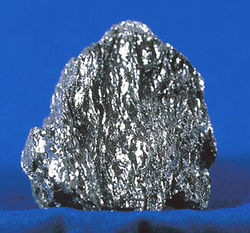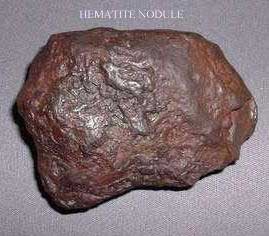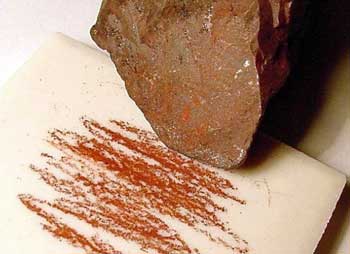hematite
Hematite, a very common meteor-wrong, is the mineral form of Iron(III) oxide (Fe2O3), one of several iron oxides. Hematite is a very common mineral, colored black to steel or silver-gray, brown to reddish brown, or red. It is mined as the main ore of iron. Varieties include kidney ore, martite (pseudomorphs after magnetite), iron rose and specularite (specular hematite). While the forms of hematite vary, they all have a rust-red streak. Hematite is harder than pure iron, but much more brittle.

gray hematite streaks bright red
Huge deposits of hematite are found in banded iron formations. Grey hematite is typically found in places where there has been standing water or mineral hot springs, such as those in Yellowstone. The mineral can precipitate out of water and collect in layers at the bottom of a lake, spring, or other standing water. Hematite can also occur without water, however, usually as the result of volcanic activity.
Clay-sized hematite crystals can also occur as a secondary mineral formed by weathering processes in soil, and along with other iron oxides or oxyhydroxides such as goethite, is responsible for the red color of many tropical, ancient, or otherwise highly weathered soils.

weathered hematite nodule
The name hematite is derived from the Greek word for blood (haima) because hematite can be red, as in rouge, a powdered form of hematite. The color of hematite lends it well in use as a pigment.
Good specimens of hematite come from England, Mexico, Brazil, Australia and the Lake Superior region of the United States and Canada.

hematite streaks red -click to enlarge


